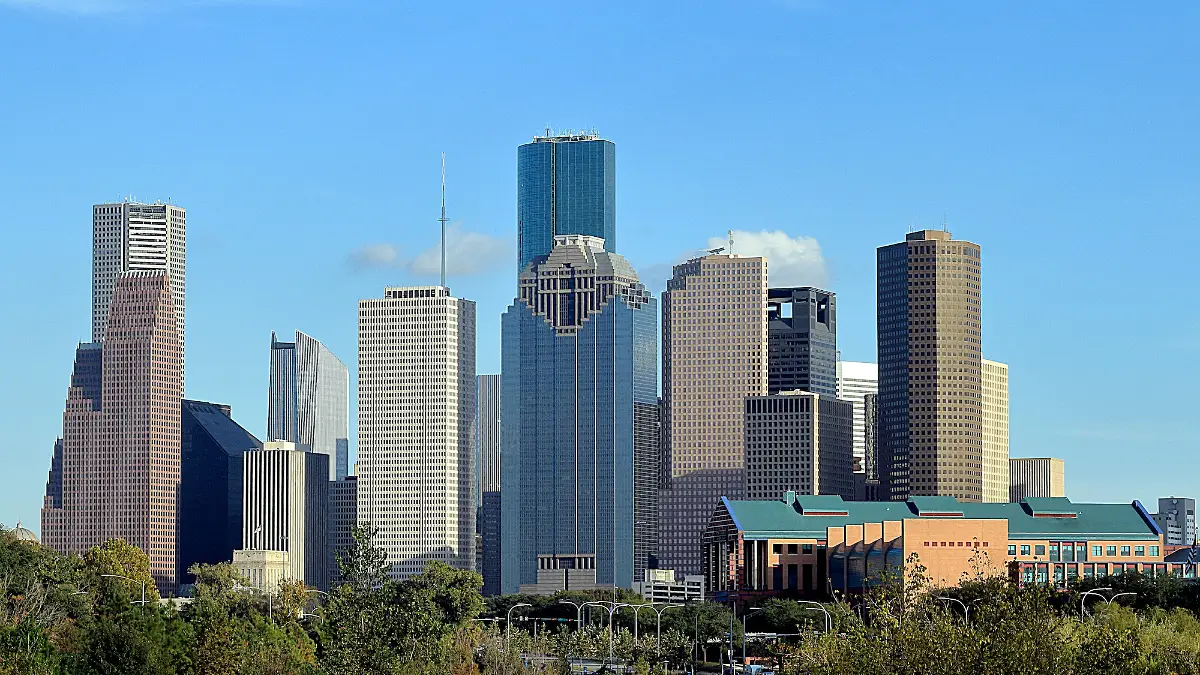Houston Office Market Vacancy Rises as Leasing Activity Declines in Q3 2023

Key Takeaways for the Houston Office Market
- Office vacancy rate increases 50 basis points
- Sublease space rises after recent decline
- Net absorption negative for first time in 2023
- Leasing volume drops
Houston Office Market Highlights
The Houston office market posted a negative net absorption of 1.0 million square feet during the third quarter, reversing the positive totals from the first half of the year. This dropped net absorption to a negative 485,701 square feet year-to-date. The overall average vacancy rate increased to 22.3% from 21.8% at both midyear and year-over-year. Leasing activity plunged 54.7% from the second quarter, with only 1.7 million square feet counted during the third quarter. Year-to-date activity totals 8.4 million square feet, with the Katy Freeway submarket accounting for 29% of that total. Three other submarkets, The Woodlands, West Loop, and CBD, each accounted for 10% to 12% of the total; the four submarkets collectively represented 62% of the overall total. The under-construction pipeline remains limited at 1.6 million square feet as proposed projects remain on hold, while five buildings totaling 329,170 square feet were delivered during the third quarter. Houston’s overall average gross rental rates nudged up to $30.06 from the previous quarter’s $29.87 but declined from the same period last year. Houston’s Class A average rental rate increased to $35.96 per square foot from $35.46 in Q2 2023.
Net absorption reversed a positive course during the third quarter to offset the gains made in the first half of the year for negative absorption year-to-date. New supply has been limited but popular for those seeking quality space, while overall leasing activity experienced a slowdown.
The overall vacancy rate increased and will likely continue rising within the next year as tenants occupy their new downsized offices and leave larger former spaces vacant.

Commentary
In the third quarter of 2023, the Houston office market continued to grapple with various challenges amid positive emerging signs. Consolidations have affected the sublease market throughout the last year, although there were improving signs prior to the third quarter, when the total increased to 6.7 million square feet. National Oilwell Varco added about 337,000 square feet of sublease space from several buildings in the firm’s Parkwood campus as they consolidated into Millennium Tower.
Sublease options do offer tenants a valuable alternative to direct spaces and oftentimes prevent direct-space landlords from aggressively raising rents. But there is concern that tenants consolidating their offices will be adding more space to the market, which already boasts one of the highest vacancy rates in the country.
Put into perspective, sublease availability is down from 7.2 million square feet a year ago and is not close to reaching the record 10 million-square-foot levels seen in 2016. But there are currently 11 sublease blocks greater than 100,000 square feet available. There has been limited leasing activity in both this year and 2022 when Enbridge signed its 257,800-square-foot deal at 915 N. Eldridge.
Reductions, flight-to-quality, and economic challenges
The current workplace remains a hybrid of remote work and in-office presence. The return-to-office trend has stabilized at 60% for Houston, which is the highest percentage of all cities cited in the Kastle Index.
Another trend in Houston is the continued reduction of tenants’ footprints as they determine their space needs, especially within the Central Business District. One example is the latest lease announcement by NRG Energy, which is taking 245,000 square feet in Houston Center but will be leaving behind more than 478,000 square feet at 910 Louisiana.
Companies searching for office space should consider that high-demand properties may not offer the same incentives as struggling ones. The flight-to-quality trend is a constant factor in Houston, as newer office properties continue to perform well while older buildings struggle to attract tenants despite potential cost savings. Properties built after 2015 collectively report an 11.1% availability compared to properties built before 2015, which report an availability of 27.1%, much closer to the overall Houston availability average of 25.6%.
Although landlords are eager to make deals, underlying building loans or financial restrictions may limit their ability to offer tenant incentives like improvement packages and rent reductions, especially in light of the difficult economic conditions of today. Soaring taxes and insurance costs are also boosting operating expenses dramatically, and tenants should be aware of a landlord’s possible limitations when negotiating lease terms.
While the Houston office market is evolving in response to changing work patterns and economic conditions, companies and landlords must remain flexible and adaptive to navigate the market conditions successfully.
The Houston office market’s bright spot has been its job growth, with a record 176,000 jobs added in 2022. As companies continue to adapt to changing office footprints and return-to-office criteria, we anticipate future softening and then a gradual and steady improvement in the office market.


![]() Click here to download the full report as a PDF
Click here to download the full report as a PDF





